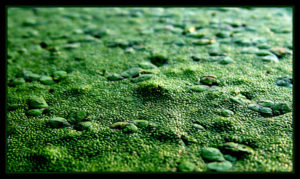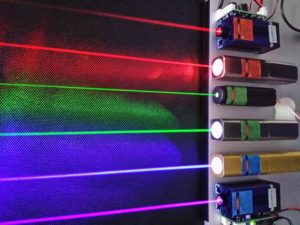Shedding light on brain function has never been so literal.
The idea that light could be used to control brain cells has always seemed like a far-fetched possibility, something more out of a scene from Star Trek than reality. The brain is a hugely complex organ, composed of multiple cell types that have distinct functions depending on the brain region they’re located in. These cells, called neurons, are important to everything we do, from how we make memories to how we know when to stop eating. Understanding a specific cell’s role in a particular brain region, however, was a challenge. One way to understand a neuron’s function is to control how it communicates to other cells. Within the last decade, scientists invented a new way to control brain cells: by shining them with light. This revolutionary technique, termed optogenetics, gives scientists an exciting window into how the brain works.
Brain cells use rapid electrical signals to communicate with each other. These electrical pulses occur in thousandths of a second, as quick as a photo’s flash, and there are many types of neurons communicating with each other. So, to be able to control a specific neuron’s firing, the controlling signal had to be just as rapid, and as precise as possible. But how could scientists control how these cells fire both quickly and precisely? The answer was surprisingly simple. Light was the one thing fast enough to turn brain cell activity on or off quickly, and individual cells could be targeted using their genetic codes. That was the foundation of optogenetics.

As such, optogenetics uses a two-part system. The first part of this method has to do with quickly stimulating neurons with light (“opto”). Shining a light on a brain cell won’t do much without a little extra help. So, like most things in science, the solution to this problem came from an unlikely source: algae that express proteins activated by light. Karl Deisseroth’s laboratory at Stanford University was the first to modify brain cells to make these light-sensitive proteins. For instance, blue light activated one type of light-sensitive protein and caused the cell to fire, while yellow light activated a different type of protein and caused the cell to reduce firing.This proved that brain cells could be controlled by light.

Secondly, in order to study a specific subset of cells, they need to be precisely targeted accordingly by their genes. Different brain cells express specific genes, or codes, that determine their function. For example, the cells that degenerate in Parkinson’s Disease express a gene called tyrosine hydroxylase (TH), which help with dopamine production. Scientists can specifically target the light-sensitive proteins to the TH-expressing cells without affecting the neighboring cells. That is, only the TH-expressing cells have the right genes to express the proteins and be controlled by light. In this way, scientists can be sure they’re manipulating only a very specific subset of cells in a given brain region.
In the past ten years that the tool has been available, scientists have begun shedding light on how the brain normally functions, such as which neurons fire when we eat or turn off when we wake up. Not only are researchers better equipped to study what happens in a healthy brain, but they can also study what happens when neuron firing goes wrong. Laboratories across the world are showing which brain cells are activated in Parkinson’s Disease or addiction, and adapting therapies to someday treat patients with these disorders. Optogenetics has given researchers the key to illuminating brain function in the near future.
Edited by Nicole Baker